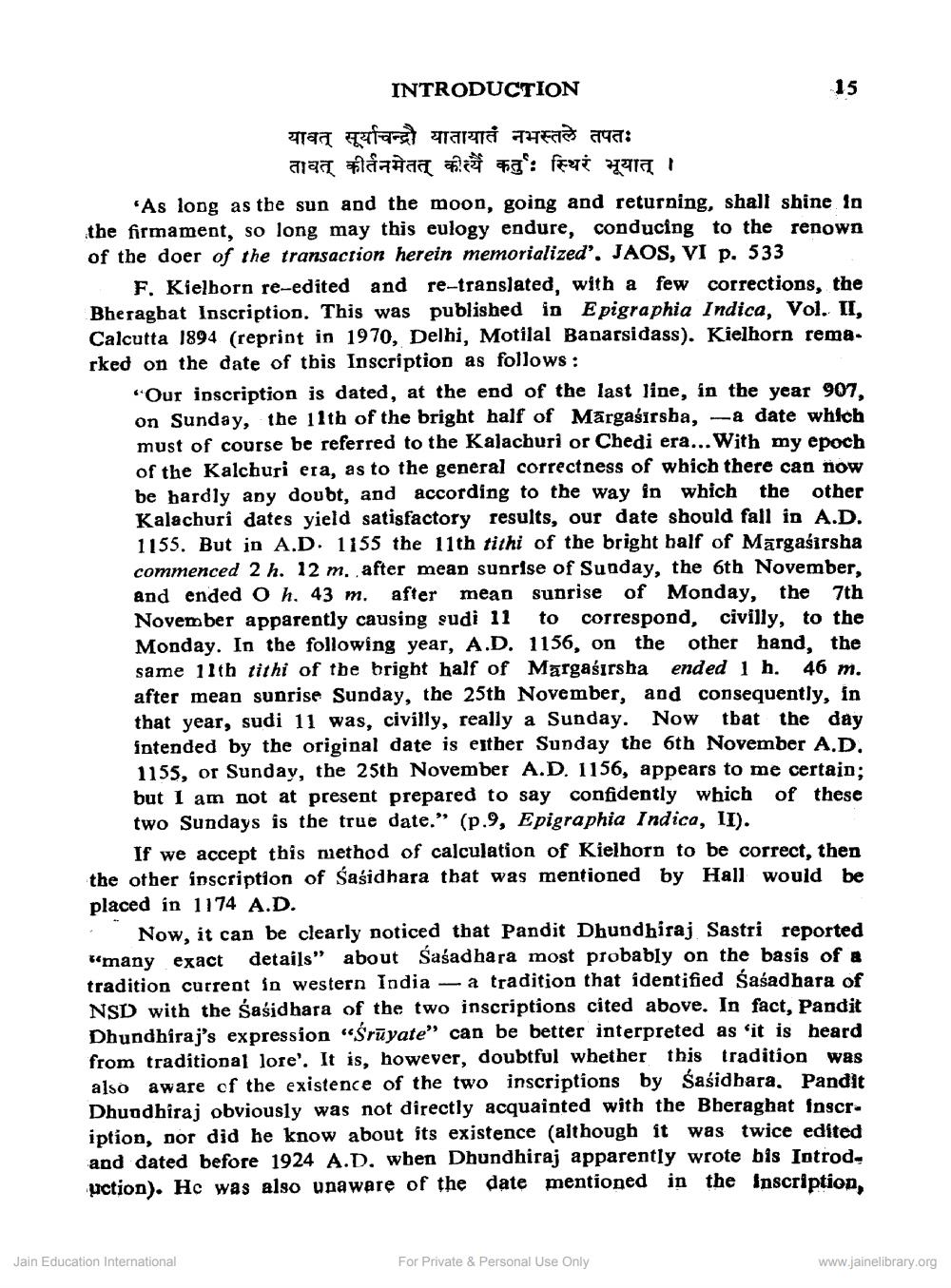________________
INTRODUCTION
यावत् सूर्याचन्द्रौ यातायातं नभस्तले तपतः
तावत् कीर्तनमेतत् कीत्य कतु: स्थिरं भूयात् । As long as the sun and the moon, going and returning, shall shine in the firmament, so long may this eulogy endure, conducing to the renown of the doer of the transaction herein memorialized'. JAOS, VI p. 533
F. Kielborn re-edited and re-translated, with a few corrections, the Bhesagbat Inscription. This was published in Epigraphia Indica, Vol. II, Calcutta 1894 (reprint in 1970, Delhi, Motilal Banarsidass). Kielhorn rema. rked on the date of this Inscription as follows:
"Our inscription is dated, at the end of the last line, in the year 907, on Sunday, the 11th of the bright half of Mārgaśırsba, -a date which must of course be referred to the Kalachuri or Chedi era...With my epoch of the Kalchuri era, as to the general correctness of which there can now be hardly any doubt, and according to the way in which the other Kalachuri dates yield satisfactory results, our date should fall in A.D. 1155. But in A.D. 1155 the 11th tithi of the bright half of Märgaśirsha commenced 2 h. 12 m. after mean sunrise of Sunday, the 6th November, and ended 0 h. 43 m. after mean sunrise of Monday, the 7th November apparently causing sudi 11 to correspond, civilly, to the Monday. In the following year, A.D. 1156, on the other hand, the same 11th tithi of the bright half of Margaśırsha ended 1 h. 46 m. after mean sunrise Sunday, the 25th November, and consequently, in that year, sudi 11 was, civilly, really a Sunday. Now that the day intended by the original date is either Sunday the 6th November A.D. 1155, or Sunday, the 25th November A.D. 1156, appears to me certain; but I am not at present prepared to say confidently which of these two Sundays is the true date.” (p.9, Epigraphia Indica, II).
If we accept this method of calculation of Kielhorn to be correct, then the other inscription of Sasidhara that was mentioned by Hall would be placed in 1174 A.D.
Now, it can be clearly noticed that Pandit Dhundhiraj Sastri reported many exact details" about Śaśadhara most probably on the basis of a tradition current in western India - a tradition that identified Śaśadhara of NSD with the Sasidhara of the two inscriptions cited above. In fact, Pandit Dhundhiraj's expression "Śrūyate" can be better interpreted as 'it is heard from traditional lore'. It is, however, doubtful whether this tradition was also aware of the existence of the two inscriptions by Sasidhara, Pandit Dhundhiraj obviously was not directly acquainted with the Bheraghat Inscr. iption, nor did he know about its existence (although it was twice edited and dated before 1924 AD, when Dhundhiraj apparently wrote bis Introd, uction). He was also unaware of the date mentioned in the Inscription.
Jain Education International
For Private & Personal Use Only
www.jainelibrary.org




